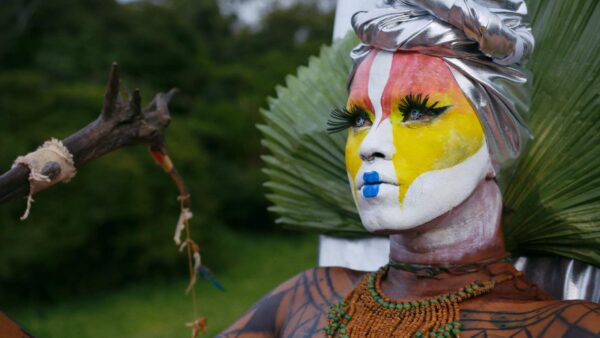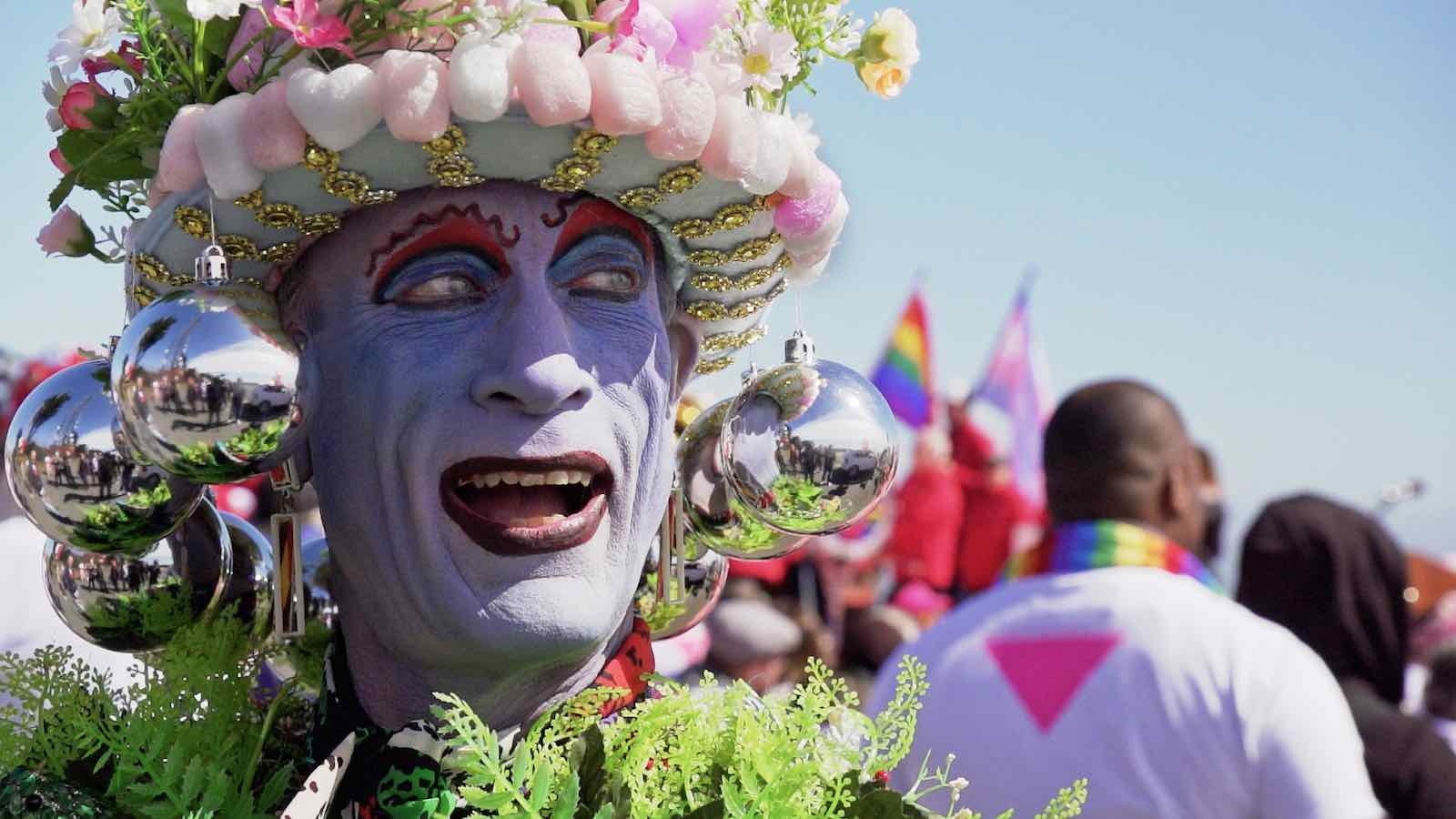
The documentary tells a story about humans and plants in a singular context. The opening sequence is one of a devastating rainforest region that shortly afterward looks like an abstraction.
The Mother of the Forest and Emerson Pontes / Uýra Sodoma lead us through a fascinating narrative on nature and culture and how they have changed although some traditions prevail. Emerson is a nonbinary trans person, who lives in Manaus, Brazil. He is a descendant of indigenous women and miners, is a biologist, has a master´s degree in ecology, and as Uýra, is a performance artist with an intersected body.
We learn that Manaus wastes the most water in the country, a city with over 80% humidity, its inhabitant’s breath water, is not as clean and pure as it used to be, and since contamination is all around nowadays. In a skillful art representation, we see in a dump, a living being agonizing, maybe a serpent or an iguana or a person, it is Uýra´s performance.
 Emerson represents a mixture of people who historically have fought over land ownership, he also informs there were stories the family never shared, those about being indigenous, he wishes to have grown up with this understanding, instead, he grew up with an absence like he was lacking something, a lasting erasure of who he was. Do we share some of these feelings with him?
Emerson represents a mixture of people who historically have fought over land ownership, he also informs there were stories the family never shared, those about being indigenous, he wishes to have grown up with this understanding, instead, he grew up with an absence like he was lacking something, a lasting erasure of who he was. Do we share some of these feelings with him?
It is said The Mother of the Forest protects the land and can remove the people who are damaging the forest; Mother of the Forest has many names and is like an energy that is joy also. We are allowed glimpses of its grandeur in several scenes.
Brazil is the country that most kills environmentalists and trans people, which is why Emerson/Uýra´s work is a manifesto, a political statement, a denouncement.
Morphosis means an immersion into oneself, it is also the name of the workshop Emerson gives at cultural venues and spaces of resistance where he uses paint to makeup on face and body, as a kind of ritualistic process resulting from its African and indigenous cultural roots, painting is a celebration between war and healing., Emerson understands paint on him as a sacred element to achieve another way of being in the world, and he shares this knowledge with his fellow participants, and also with future generations.
After a ritual with smoke, makeup, and costumes, Emerson becomes Uýra.
 The documentary presents performing drag in a new, non-traditional way, by indigenous and black LGBT participants from the periphery. They question gender as well as social and environmental issues. In their performances, they conjugate art and magic and deliver awe. In contrast with the dreadful moments, Brazil is living and also a confrontation with the structural racism and transphobia in the country.
The documentary presents performing drag in a new, non-traditional way, by indigenous and black LGBT participants from the periphery. They question gender as well as social and environmental issues. In their performances, they conjugate art and magic and deliver awe. In contrast with the dreadful moments, Brazil is living and also a confrontation with the structural racism and transphobia in the country.
There is a simile between Amazonia and the minorities, both are persecuted and denied in their Earth–given diversity. They wonder how groups are like plants, growing in a violent and abandoned land, leaving off the strength of memory.
The main concern of Emerson/Uýra and Company is creating soil for others to come and occupy, like nature and plants of the forest, growing quickly and to the rhythm of drums.
The handmade costumes with leaves and roots deserve attention, they are outstanding.
The final credits and their background are dainty, do not miss them.
The film has won awards at BendFilm Festival, Frameline San Francisco and L.A. Outfest. It will next be screened at OUTshine Fort Lauderdale NewFest in NY
Review by José Mayorga , Guatemala, Central America lawyer and notary public, visual artist, and editor of El Azar Cultural, lives and works in Guatemala City. Cinema lover, curious about the possibilities life brings and eager to live the experience.

